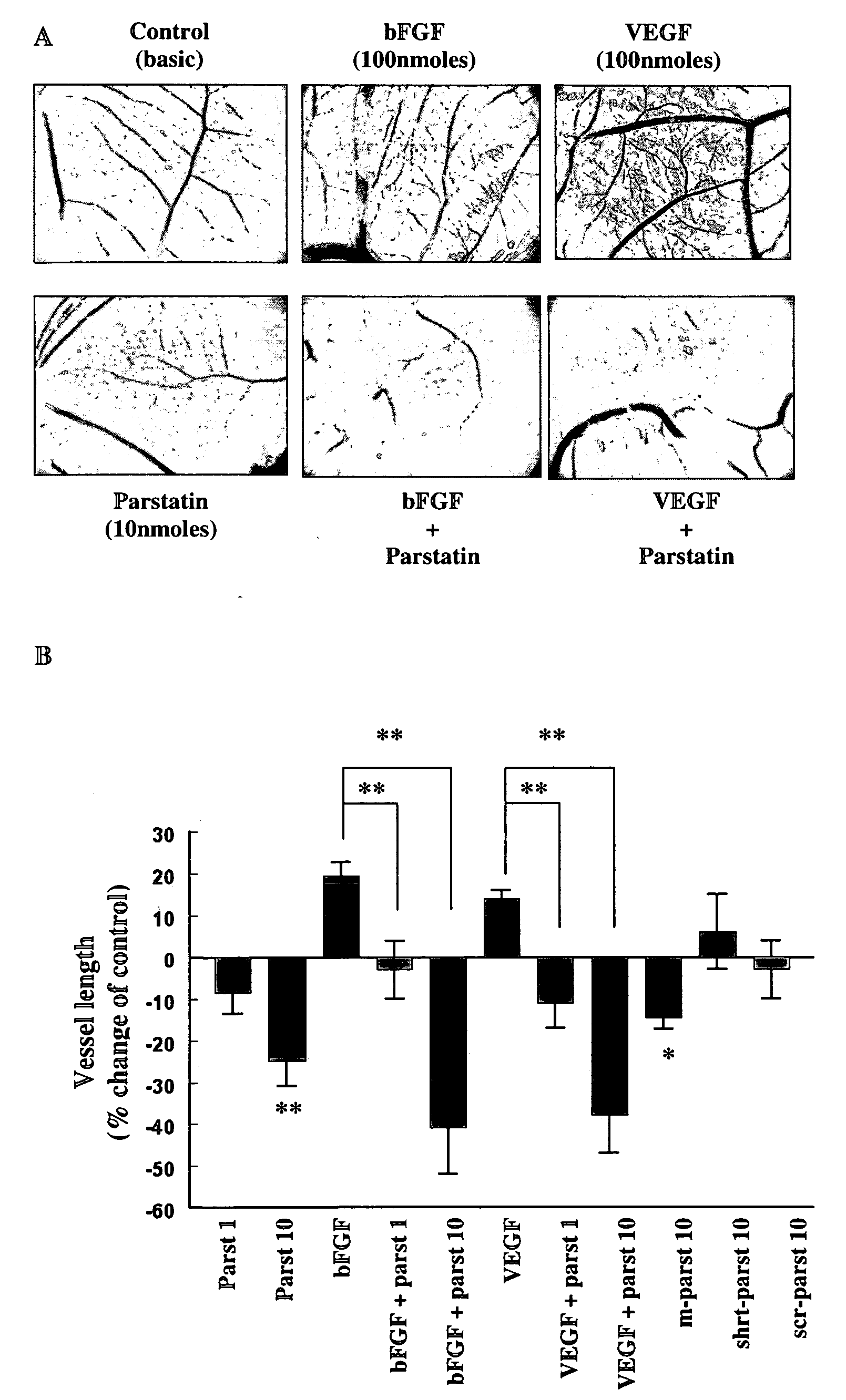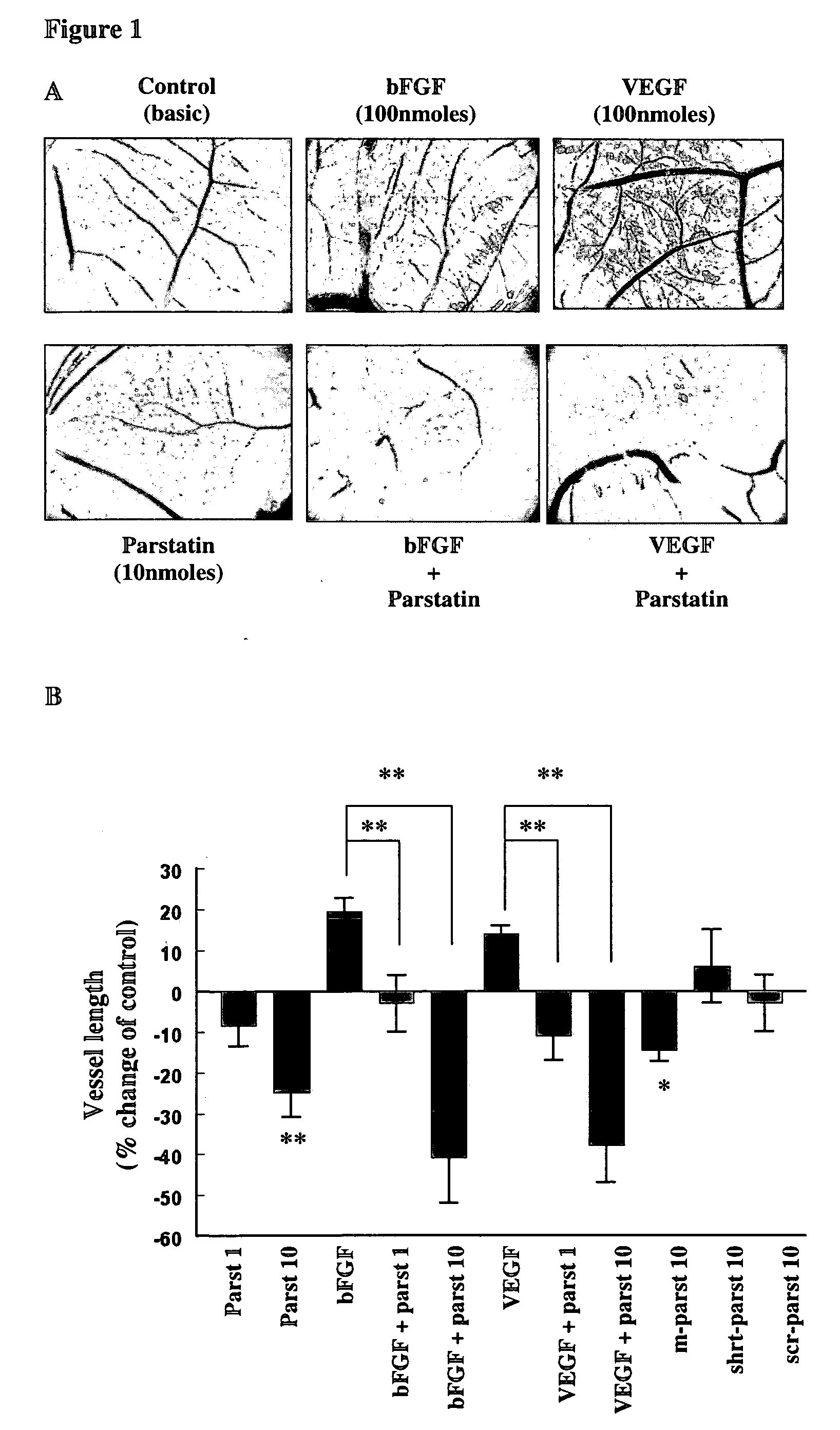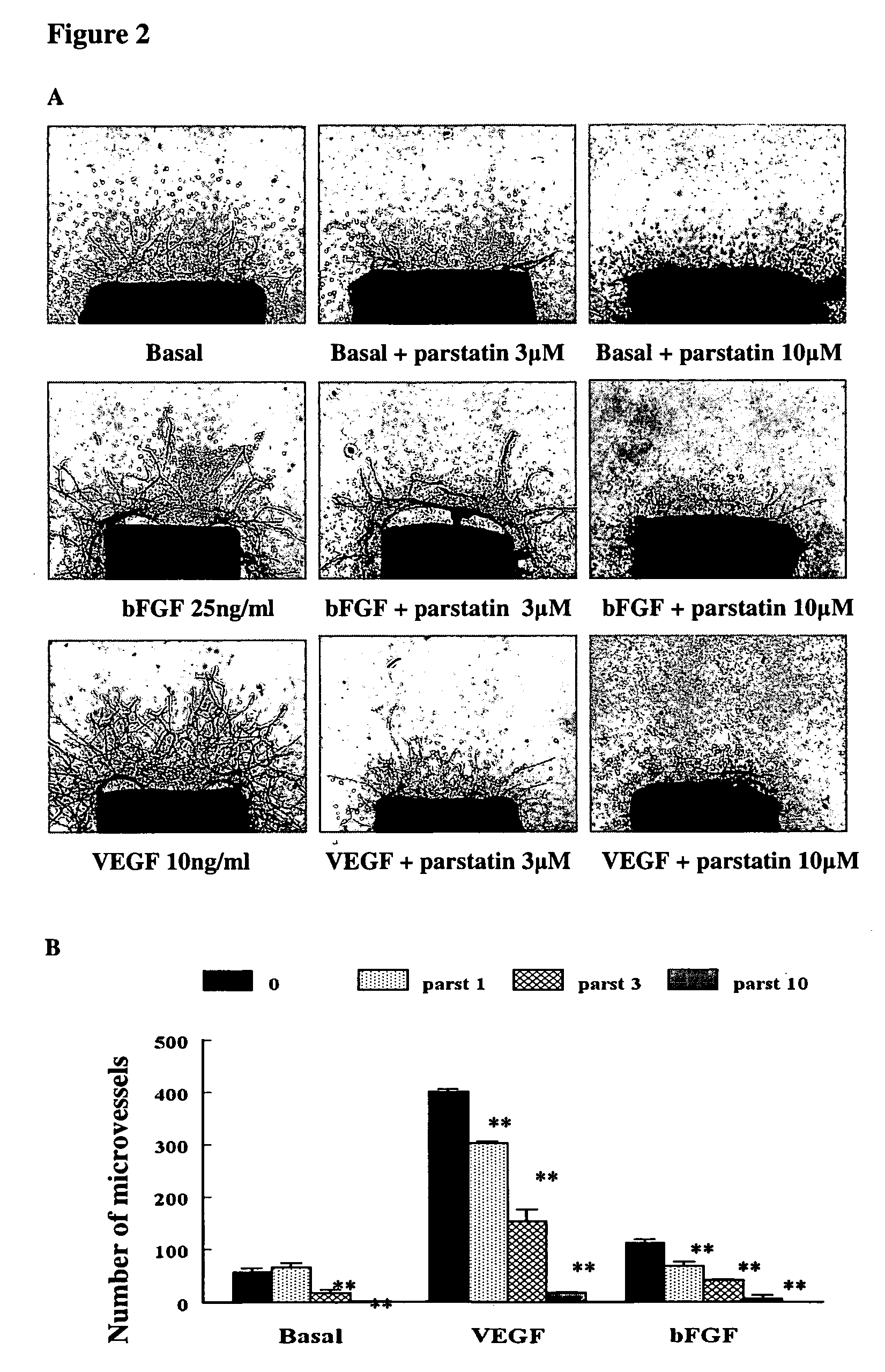Bioactive parstatin peptides and methods of use
a parstatin peptide, bioactive technology, applied in the direction of peptide/protein ingredients, angiogenin, drug compositions, etc., can solve the problem of limited information regarding the biological role of cleaved peptides upon activation of par-1
- Summary
- Abstract
- Description
- Claims
- Application Information
AI Technical Summary
Problems solved by technology
Method used
Image
Examples
example 1
Peptides Synthesis and Compositions
[0107]All peptides used in the experiments described herein were synthesized in the core peptide facility of Peptide Specialty Laboratories GmbH (Heidelberg, Germany), Ezbiolab Inc. (Westfield, Ind., USA) and Biosynthesis, Inc. (Lewisville, Tex., USA). Synthesized peptides were purified by HPLC technology, were characterized by mass spectrometry technology and were sequenced. The synthesized peptides were as follow:[0108]1. Human parstatin, which corresponds to 1-41-amino acids cleaved N-terminal fragment of human PAR-1. Sequence: MGPRRLLLVAACF-SLCGPLLSARTRARRPESKATNATLDPR (SEQ ID NO: 1) (molecular weight of 4468 Da).[0109]2. Human parstatin conjugated with fluorescent isothiocyanate (FITC, fluorescein). Sequence: FITC-Ahx-MGPRRLLLVAACFSLCGPLLSAR-TRARRPESKATNATLDPR (SEQ ID NO: 1) (molecular weight of 4968 Da).[0110]3. Mouse parstatin, which corresponds to 1-41-amino acids cleaved N-terminal fragment of mouse PAR-1. Sequence: MGPRRLLIVALGLSL-CGPLLSS...
example 2
Parstatin Inhibits Angiogenesis In Vivo
[0114]The in vivo chick chorioallontoic membrane (CAM) angiogenesis model was used to evaluate the effect of parstatin in angiogenesis. On incubation day 9 of fertilized chicken eggs, an O-ring (1 cm2) was placed on the surface of the CAM and the vehicle or the indicated substances were placed inside this restricted area. After 48 h, CAMs were fixed in saline-buffered formalin, photographed, and analyzed using the Scion Image software (Scion Image Release Beta 4.0.2 software; Scion Corporation, Frederick, Md.). Image analysis was performed on at least 18 eggs for each group. Vessel number and length were evaluated by pixel counting, and the results expressed as mean percentage of control±SE. Statistical analyses were performed using a Student's t test.
[0115]As shown in FIGS. 1A and B, parstatin was very potent antiangiogenic substance. The application of human parstatin on CAM of chick embryo, at concentration of 10 nmoles, resulted in a signif...
example 3
Parstatin Inhibits Angiogenesis in Rat Aortic Ring Assay
[0117]The recognition that angiogenesis in vivo involves not only endothelial cells but also their surrounding cells, has led to development of angiogenic assays using organ culture methods. Of these, the rat aortic ring assay has become the most widely used.
[0118]Freshly cut aortic rings obtained from 5- to 10-week-old Fischer 344 male rats were embedded in collagen gels and transferred to 16-mm wells (4-well NUNC dishes) each containing 0.5 ml serum-free endothelial basal medium (EBM, Clonetics Corporation) alone or supplemented with VEGF or bFGF. The angiogenic response of aortic cultures was measured in the live cultures by counting the number of neovessels over time using art accepted methods. Results expressed as mean number of microvessels±SE. Statistical analysis was performed using unpaired two-tailed t-test.
[0119]As shown in FIGS. 2A and B, parstatin inhibits microvessel formation in a dose-dependant manner, with comp...
PUM
| Property | Measurement | Unit |
|---|---|---|
| Fraction | aaaaa | aaaaa |
| Fraction | aaaaa | aaaaa |
| Fraction | aaaaa | aaaaa |
Abstract
Description
Claims
Application Information
 Login to View More
Login to View More - R&D
- Intellectual Property
- Life Sciences
- Materials
- Tech Scout
- Unparalleled Data Quality
- Higher Quality Content
- 60% Fewer Hallucinations
Browse by: Latest US Patents, China's latest patents, Technical Efficacy Thesaurus, Application Domain, Technology Topic, Popular Technical Reports.
© 2025 PatSnap. All rights reserved.Legal|Privacy policy|Modern Slavery Act Transparency Statement|Sitemap|About US| Contact US: help@patsnap.com



